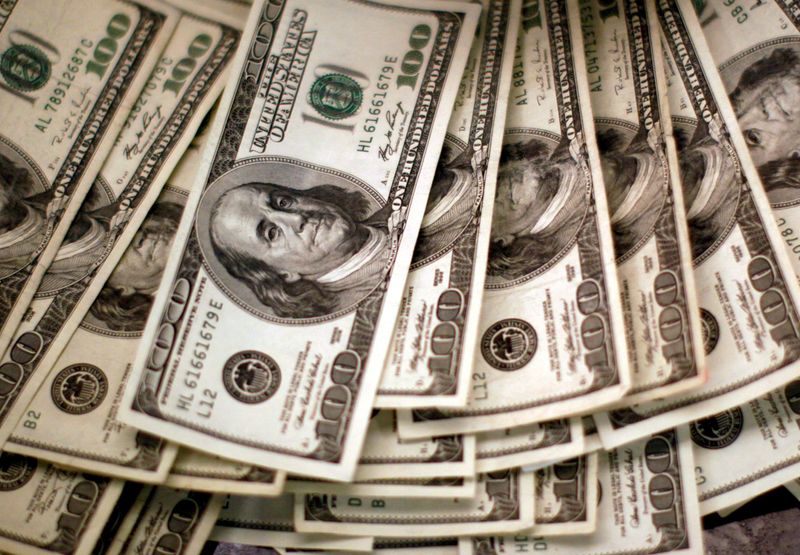Dollar powers to new two-decade high on Fed outlook, Russia jitters
2022.09.21 22:34
[ad_1]

© Reuters. FILE PHOTO: Four thousand U.S. dollars are counted out by a banker counting currency at a bank in Westminster, Colorado November 3, 2009. REUTERS/Rick Wilking/File Photo
By Kevin Buckland
TOKYO (Reuters) – The U.S. dollar pushed to a fresh two-decade high versus major peers on Thursday, propelled by the Federal Reserve’s hawkish outlook for interest rates and Russian President Vladamir Putin’s mobilisation of more troops for the war in Ukraine.
The , which measures the currency against a basket of six counterparts including the euro and sterling, rose as high as 111.65 for the first time since June 2002.
The greenback also notched new highs against regional currencies from the and New Zealand dollars to the offshore and the Korean won, as well as the Singapore dollar and Thai baht.
The Fed issued new projections showing rates peaking at 4.6% next year with no cuts until 2024 after raising its target interest rate range by another 75 basis points overnight to 3.00%-3.25%, as was widely expected.
The dollar was already supported by demand for the safest assets after Putin announced he would call up reservists to fight in Ukraine and said Moscow would respond with the might of all its vast arsenal if the West pursued what he called its “nuclear blackmail” over the conflict there.
The two-year U.S. Treasury yield reached a fresh 15-year high of 4.132% in Tokyo trading.
“Both the Fed projections and the Russia headlines contributed to the dollar’s strength, which was particularly acute against the euro and other European currencies,” said Shinichiro Kadota, a senior FX strategist at Barclays (LON:) in Tokyo.
“Commodity currencies also took a big hit due to the deterioration in risk sentiment.”
The euro weakened to a new 20-year trough of $0.9807, before trading 0.23% down on Wednesday at $0.9812.
The dollar rose 0.23% to 144.44 yen, edging back toward the psychological 145 mark where it was rebuffed two times this month. It hit a 24-year high of 144.99 on Sept. 7.
A divergence in monetary policy is at the root of the dollar-yen’s climb, with the Bank of Japan widely tipped to stick to ultra-easy policy settings later in the day.
The Bank of England also announces policy on Thursday, with markets split on whether a 50 or 75 basis point hike is in the offing.
Sterling fell to a fresh 37-year low of $1.1225, and last changed hands at $1.1233, a 0.3% decline from the previous session.
The Aussie declined 0.63% to $0.65915 after having touched $0.65895, its lowest since May 2020. Liquidity in the currency may be thin with Australia observing a public holiday.
[ad_2]
Source link








